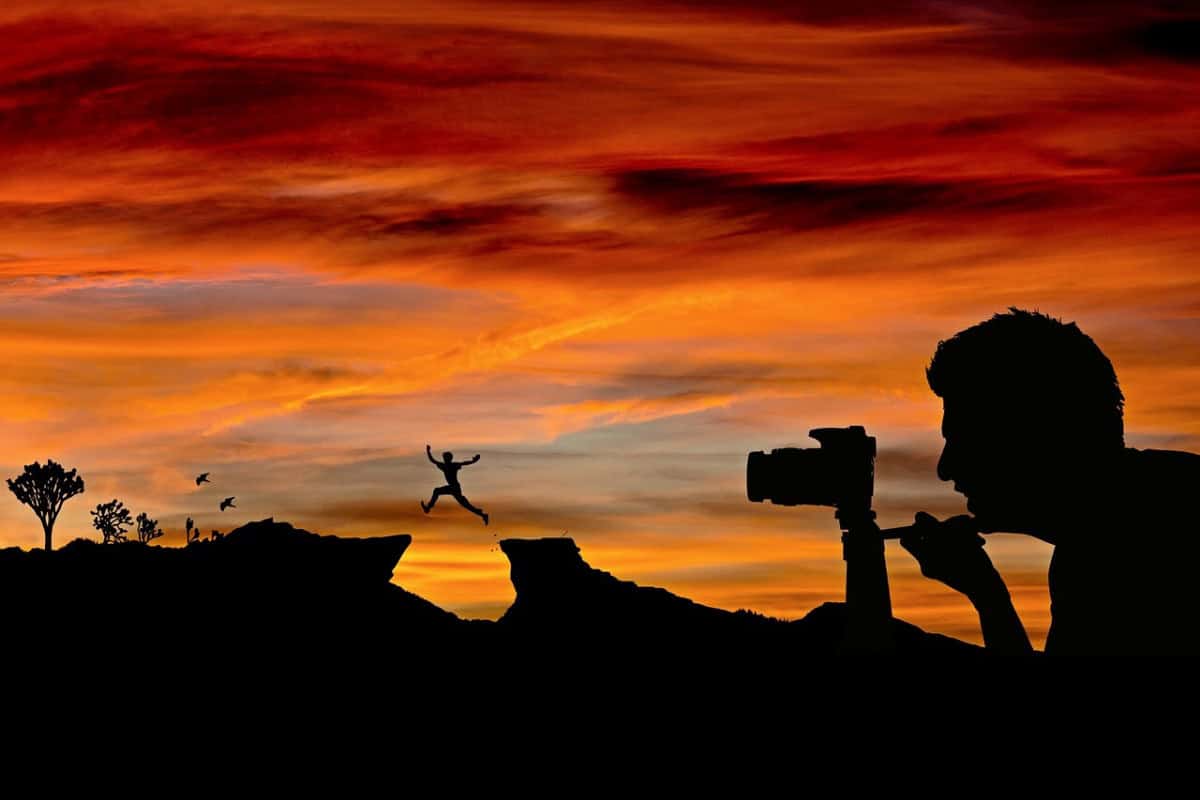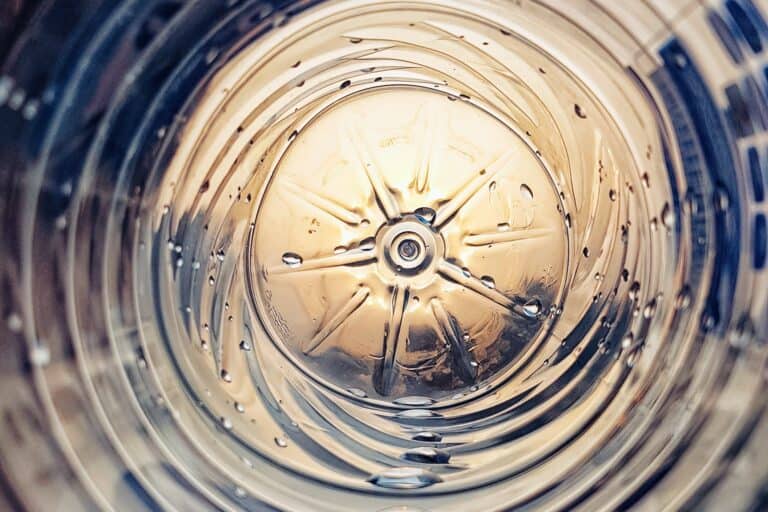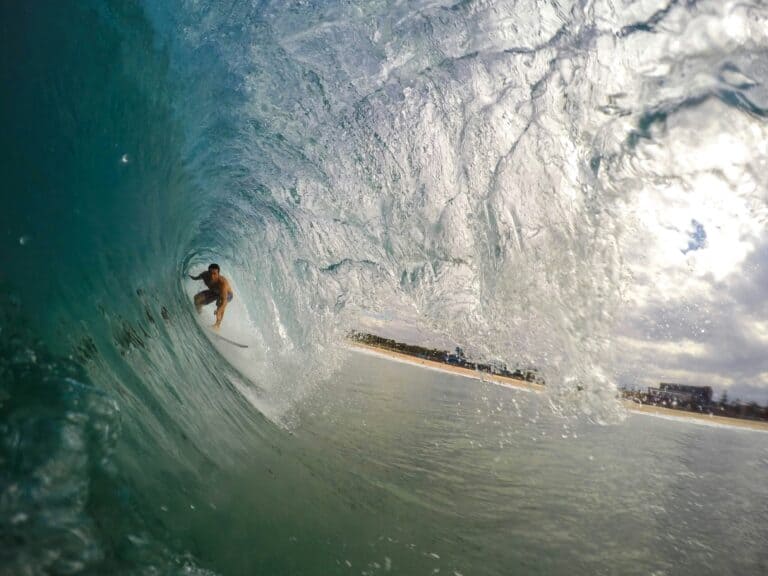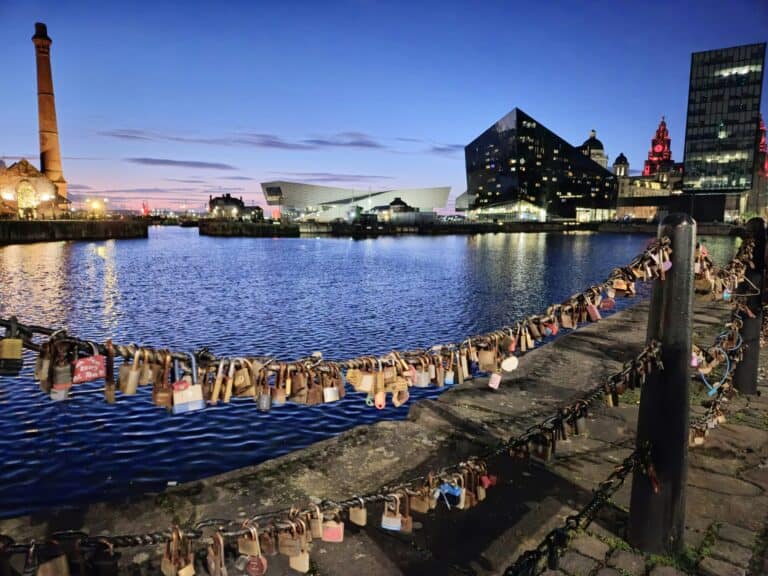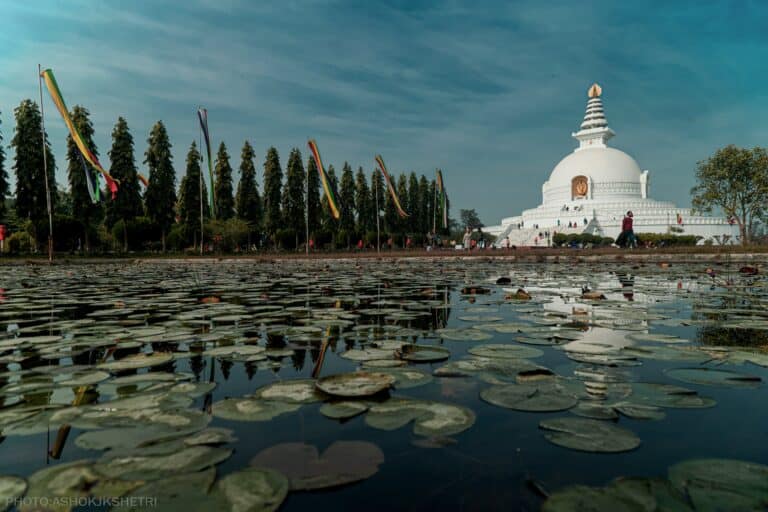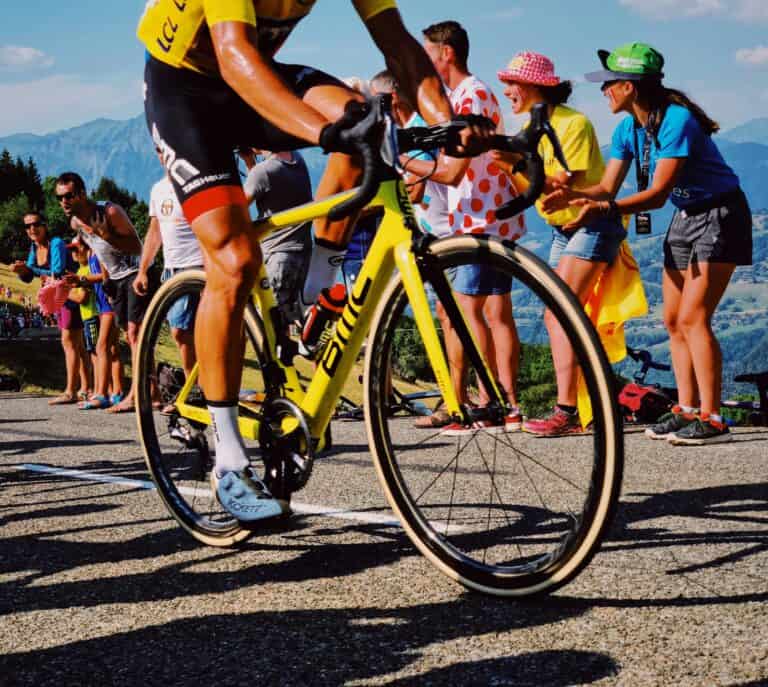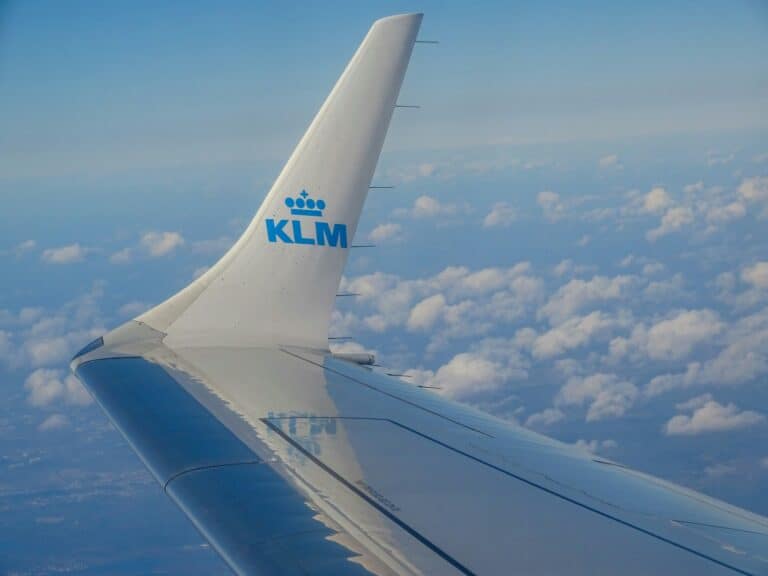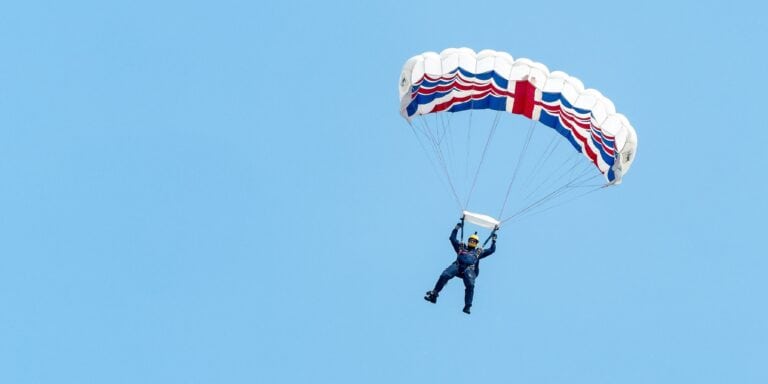Getting that shot of the troops coming out of the jungle, or the trail runner on the side of the volcano doesn’t require the most expensive equipment. You don’t even need ninja-level camera skills. Most important is getting yourself into the right position, being comfortable there, and keeping yourself safe.
All the shots below are from the last three years working in South America. They try to give a little insight into the moment, the composition choices and even the missed opportunities when the situation got too hairy.
Swollen rivers

I’m also in my underpants, behind the camera. (A semi-naked moment in 5-degree C water is worth it to ensure warm dry clothes when you get out!)
Using a wide-angle lens, I wanted to shoot the hiker close-up at the deepest point, and still get mountains as a background. I removed the camera strap from my neck in case I got washed down river. The camera is close to the river to show its speed, and to ensure the water’s turquoise transparency isn’t spoiled by reflection.
Mean streets

Safe street photography requires respect for your subjects. Beyond that, be opportunistic with the camera, with settings adjusted to the light and situation before the moment arrives. Awareness of your surroundings and developing situation combined with a discreet camera (like the Sony Alpha 6000 used throughout this article) is essential.
High altitude

Altitude rapidly zaps your camera battery life (due to the cold temperatures) as well as your ability to think (if not properly acclimatised).
The first problem only affects night time photography in the Atacama, when temperatures plummet. I shot this from my GoPro Hero3+, using a remote control on my handlebars. The second problem of altitude sickness and short-supplies we resolved by almost immediately turning around afterwards, to fight another day.
Moving vehicles

We didn’t expect to get this ride. Before I knew it, we were rolling down the lower slopes of Volcano Villarica at 30km/hr with no chance of changing my narrow-angle 50mm lens, and without a seat belt in sight.
The high-angle shot helps portrays the vulnerability of the hitch-hiker, whilst the slow-shutter speed hopefully portrays at least some of the blurred background. Ideally – pick your equipment carefully before climbing aboard, then stick with it. Watch out for low-hanging branches or tunnels!
Desert islands

Selecting when to use the camera is key in remote locations without power supply.
Switch off the display screen. Reviewing photos in the viewfinder saves the battery. Shoot only when the light is good (usually at the beginning and end of the day). Meticulously clean your camera (dry bags, air blowing tool, brushes, lens wipes). If you find yourself missing salty beach shots because you’re afraid of breaking your camera – you’ve spent too much money on it.
Climbing to heights

The human eye is attracted to perspectives it is not used to. Just make sure you don’t lose it (or any other part of your body for that matter) in getting the shot.
If you are risking arrest, or a dangerous fall – scope the joint the night before. Here I checked the strength of the branches then slowly practiced climbing the tree, before camping with the Nimbus Outdoors team on the lake-shore to wait for the runners at sunrise. Back in position, I shot bursts at arms-reach with a wide-angle lens. Branch kept in frame – adds to the fun!
Outrageous weather

Shooting in drilling rain will most-likely break even a “weather-sealed” traditional camera. Reluctantly I shot this using my GoPro with waterproof housing, thereby sacrificing loss of manual control over the alternative of not getting a camera out at all.
I’m standing in the boat to get that nice high-angle, flooding the majority of the shot with water and brooding sky above the solitary passenger. The rakish angle hopefully shows the boat’s instability. Absolute worst-case scenario is I’m falling in, so I’m ready with rucksack straps loosened, waist-belt unfastened.
Distant cultures

In Janaury 2016 I flew for four hours across the Pacific Ocean to attend the two week Tapati Festival on remotest Easter Island. Tourists are tolerated – but the festival is almost exclusively organised by, intended for, and attended by the indigenous Rapa Nui people.
Not everyone wants to be photographed whilst competing in their loincloth. A press pass will smoothe the way if you are working professionally – but it is still no substitute for asking permission. Removing your face from behind your viewfinder occasionally shows you’re interested in the people as much as capturing their image in your camera.
Treacherous terrain

Marmolejo, in the central Andes mountains, is the most southerly 6000m peak in the world. People in remote places on treacherous terrain don’t hang around for pictures. To capture them you need to look ahead, imagine how the shot will look and move into position safely before they get there.
I shot the entire 7-day expedition with one fixed 50mm lens. There was no space for more; nor time or safe spaces to change them. Avoid taking your rucksack off on terrain like this – it’s likely to slip away and start tomahawking down the mountain, taking all your tasty snacks with it.
Conflict zones

The 53-year civil war waged by the FARC rebel group on the border of Panama and Colombia ended with disarmament in June 2017. Two months earlier, I visited the Darién National Park UNESCO world heritage site.
When we overtook the soldiers, I dismounted so my guide could navigate the puddle. No time for getting the manual settings correct here, swinging the dial to full automatic. The ridiculous cowboy hat I was wearing, accompanied by a shared few words with the soldiers earlier up the road identified me as unthreatening – yet if you look carefully, they are trigger-finger-ready.
On the run

I think this photo is really fun. Over the previous ten minutes I must have photographed Juan Carlos 40 times. But I could never get quite get the Holy Trinity shot of the lake, the massive exertion on his face and the steepness of the volcano. So I kept on running up the volcano, to try again.
Running with a camera of course requires fitness (and the right loose clothing), but your camera is important too. It can’t be too heavy. Also make sure you cup that lens whilst holding the body with the other hand to ensure the jolting doesn’t damage their connection. Persistence is sometime rewarded – even with a fly to boot!
About the photographer:
Matt Maynard is a self-taught photographer shooting mountain adventures and environmental stories from his base in Santiago, Chile. @MattMaynardFreelance
Want more Matt? Check out his other face articles
